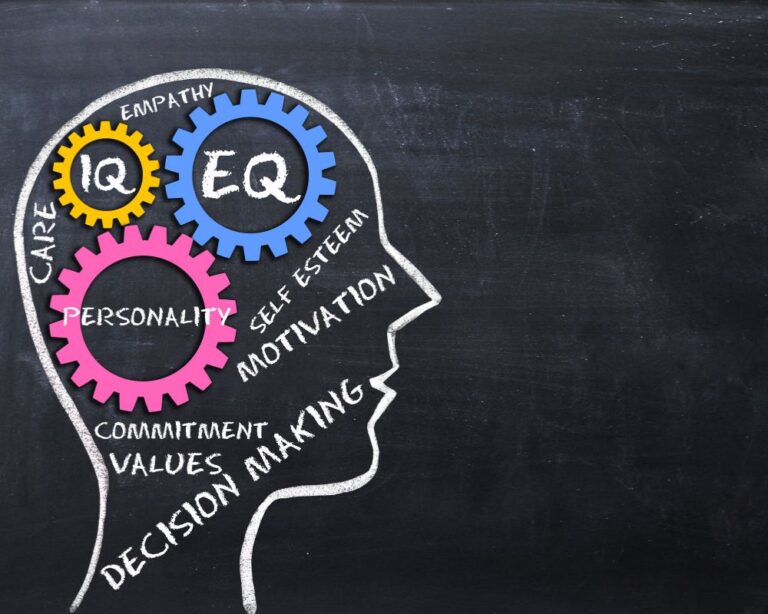Managing autism in the classroom starts with structure. Students often thrive whenever routines are predictable, reducing anxiety and helping them focus. Visual aids like schedules or image cards break tasks into clear steps, making expectations easier to follow. Sensory challenges, like bright lights or loud noises, can be overwhelming, so adjusting the environment matters.
Encouraging social skills through peer interactions builds confidence, while positive reinforcement reinforces progress. With patience and flexibility, teachers create spaces where every student can succeed.
Establishing a Predictable Routine
Because students with autism often thrive on structure, establishing a predictable routine in the classroom can substantially ease their stress and improve focus. Predictable routines create a sense of security, helping students feel more comfortable and less anxious.
Clear expectations and schedules allow them to anticipate daily activities, reducing confusion and frustration. Visual cues, like charts or timers, reinforce these routines and help with effortless transitions between tasks. Since unexpected changes can be overwhelming, advance notice before shifts in activities is indispensable.
Integrating breaks within the schedule also supports sensory needs, giving students time to regulate and refocus. A well-structured routine fosters independence, as students learn to follow steps confidently. Through maintaining consistency while allowing flexibility, educators can create an environment where students with autism feel supported and capable.
Utilizing Visual Supports and Schedules
Visual supports and schedules offer powerful instruments to assist students with autism navigate classroom expectations. These aids simplify routines, alleviating anxiety and cultivating independence through apparent, organized direction.
Teachers can augment learning through embedding tailored visuals that encourage engagement and consolidate daily tasks.
Benefits of Visual Schedules
One of the key strengths of visual schedules lies in how they adapt to different learning styles, making them useful across various classroom settings. For students with autism spectrum disorder (ASD), these tools provide structure, reducing anxiety and fostering independence. Visual schedules clarify expectations, helping learners navigate daily routines with confidence.
The benefits include:
- Enhanced Comprehension: Image-based schedules improve perception compared to verbal instructions alone.
- Smoother Transitions: Visual aids ease shifts between activities, minimizing distress.
- Improved Task Completion: Research shows students with autism follow routines more effectively when using visual supports.
Creating Effective Supports
Building on the advantages of visual schedules, the next step involves designing these supports to fit individual needs. Visual supports work best when tailored to a student’s comprehension level, utilizing pictures, icons, or words to create clear routines.
In special education classroom settings, these tools help reduce anxiety by providing predictability. Pairing visual aids with positive reinforcement—like praise or small rewards—encourages engagement. Strategies for success often include incorporating Applied Behavior Analysis (ABA) techniques, such as breaking tasks into smaller steps.
Teachers can adjust supports based on a student’s progress, ensuring they remain effective. Consistency is key; whenever students know what to expect, they feel more secure. Visual supports aren’t one-size-fits-all—flexibility guarantees they meet each child’s unique learning style and needs.
Implementing Daily Routines
How can daily routines become less overwhelming for students with autism? Structured daily routines in the classroom help reduce anxiety and foster positive behaviors for students with autism spectrum disorder (ASD). Visual supports, like schedules or charts, provide clear expectations, making shifts smoother. Teachers can use these strategies to create predictability, which is key for students with ASD.
Visual Schedules: Displaying a step-by-step plan helps students understand what comes next, reducing confusion.
Consistent Shifts: Warning signals, like timers or verbal cues, prepare students for changes in activities.
Reinforcement Systems: Rewarding positive behaviors encourages students to follow routines independently.
Incorporating Positive Reinforcement Techniques
Using reward systems, like stickers or extra playtime, helps students with autism understand which behaviors lead to beneficial results.
Token economies, where students earn points for completing tasks, give clear structure and motivation for advancement.
Offering specific praise, such as noting a child’s effort to share, reinforces learning and builds confidence.
Reward Desired Behaviors
Positive reinforcement helps children with autism learn and repeat good behaviors through rewarding their efforts. Through focusing on desired behaviors, teachers can reinforce positive actions in the classroom, making learning more engaging and effective. Reward systems, such as verbal praise or small incentives, motivate students to practice these behaviors consistently.
To maximize success, educators should:
- Identify specific behaviors—Clearly define what actions deserve rewards, like raising a hand or completing a task.
- Offer immediate feedback—Quick praise or a small reward strengthens the connection between the behavior and the positive consequence.
- Tailor rewards individually—Some students respond to stickers, while others prefer extra playtime or verbal encouragement.
Consistency and patience are key, as reinforcing positive behaviors builds confidence and encourages long-term growth.
Use Token Economies
Token economies can be a powerful way to encourage positive behaviors in students with autism. This behavior management strategy involves rewarding children with tokens—like stickers or points—whenever they demonstrate desired actions in the teaching environment. The student exchanges these tokens later for meaningful rewards, such as extra playtime or small prizes.
Clear expectations help children understand which behaviors earn tokens, creating structure and predictability. Teachers must consistently apply the system while gradually reducing reliance on external rewards as the student internalizes the behavior. As soon as tailored to individual needs, token economies foster motivation, cooperation, and skill-building in classroom settings. This approach works best where paired with a supportive, low-stress environment where children feel safe to learn and grow.
Praise and Encourage Progress
As students with autism receive specific, genuine commendation for their efforts, it reinforces their self-assurance and enthusiasm to persist. Positive reinforcement, a core ABA strategy, helps shape desired behaviors by acknowledging progress, no matter how small. Teachers can use these techniques to build trust and motivation in students, tailoring praise to individual needs and interests.
Effective reinforcement strategies include:
- Descriptive Praise – Clearly stating what the student did well, like “You shared your crayons—that was so kind!”
- Immediate Feedback – Offering encouragement right after the behavior to strengthen the connection.
- Personalized Rewards – Using preferred activities or items, like extra playtime, to reinforce effort.
Consistency and sincerity in praise help students with autism feel valued, fostering long-term growth in communication and social skills.
Managing Sensory Overload in the Classroom
Acknowledging triggers and adapting the classroom setup guarantees students feel secure and focused. Addressing these needs, educators help lessen stress and enhance engagement for learners with autism.
Many students with autism face sensory symptoms like hypersensitivity to noise, bright lights, or crowded spaces, leading to sensory discomfort. To create a supportive learning environment, teachers can reduce overwhelming sensory stimuli by dimming lights, using noise-canceling headphones, or designating quiet zones. Incorporating sensory activities, such as fidget tools or textured objects, helps students regulate their input. Small changes, like avoiding strong scents or allowing movement breaks, can also ease sensory overload.
Using Clear and Direct Communication
Clear and direct communication makes a big difference for students with autism, helping them follow instructions and stay engaged in lessons. Using concise instructions and avoiding abstract language comprehends students’ expectations without confusion.
Strategies for teaching include breaking tasks into smaller steps and tailoring language to each student’s grasp level. This creates a supportive learning environment where students feel confident and capable.
To foster a welcoming environment, educators can:
- Use simple, literal language—avoid idioms or sarcasm, which can be misunderstood.
- Repeat or rephrase key points—reinforcing clarity without overwhelming the student.
- Pair verbal instructions with visual aids—supporting apprehension through multiple formats.
Encouraging Social Interaction and Peer Relationships
Building strong social connections can be challenging for students with autism, but with the right support, they can develop meaningful peer relationships. In the general education classroom, teachers can foster social interaction by creating structured opportunities for collaboration. Pairing a student with autism with a peer companion for group activities helps build social skills naturally. Visual aids, like emotion cards, can assist children with autism in discerning and responding to social cues. Small, supervised play sessions also encourage peer relationships without overwhelming the student.
| Strategy | Purpose | Example |
|---|---|---|
| Peer buddy system | Builds one-on-one connections | Partnering for science projects |
| Visual social scripts | Clarifies social expectations | Using cards for turn-taking |
| Structured playgroups | Reduces anxiety in social settings | Small board game sessions |
| Role-playing scenarios | Practices real-world interactions | Acting out greetings |
| Interest-based groups | Encourages shared passions | Lego or art clubs |
These approaches help children with autism engage more comfortably with peers.
Implementing Applied Behavior Analysis (ABA) Strategies
While many strategies support students with autism in the classroom, Applied Behavior Analysis (ABA) stands out as a research-backed approach that helps shape positive behaviors and build essential skills. ABA focuses on breaking tasks into smaller steps, using positive reinforcement to encourage progress.
Teachers can implement these strategies through:
- Setting clear goals: Tailoring objectives to each student’s needs, like improving communication or reducing disruptive actions.
- Using positive reinforcement: Rewarding desired behaviors with praise, tokens, or breaks to motivate repetition.
- Tracking changes: Monitoring alterations to adjust strategies for better results.
ABA helps students with autism thrive by fostering independence and reducing challenges. By applying these classroom strategies consistently, educators create a structured, supportive environment where students feel encouraged to learn and grow.
Supporting Reading Comprehension and Academic Engagement
Reading can be a challenge for students with autism, but the right approaches make it easier to comprehend and appreciate. For children with autism spectrum disorder (ASD), tailored strategies for students can boost success in reading comprehension and academic engagement.
Teachers can help reduce anxiety by choosing books aligned with a student’s interests, making reading more relatable. Visual aids, like graphic organizers, clarify complex ideas, while explicit instruction in figurative language bridges gaps in insight. Periodic check-ins confirm progress, and clear feedback prevents misapprehensions. Encouraging at-home reading with family support strengthens skills.
These methods, used to help children with ASD, create a supportive environment where learning feels less overwhelming. Teaching students this way fosters confidence and a love for reading.
Conclusion
A teacher once described her student with autism as a train needing tracks—without structure, he’d derail. Through introducing a visual schedule, his anxiety melted, and he began thriving. Like guiding a train smoothly along its route, predictable routines and clear supports help students navigate the classroom with confidence. Whenever their world feels orderly, their potential shines, proving that small adjustments can create life-changing stability. The right strategies turn chaos into calm, one step at a time.




